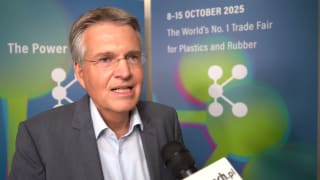In the reporting year, sales in the Performance Polymers segment declined substantially by around 13 percent to about EUR 4.5 billion. A persistently difficult market environment coupled with significantly lower and volatile prices for raw materials, especially butadiene, resulted in a negative price effect of 15 percent. Currency effects also had a negative impact. Volumes increased by around four percent, due in part to capacity expansions in the Butyl Rubber and High Performance Materials business units.
EBITDA pre exceptionals for the segment shrank by some 52 percent to EUR 389 million. Earnings were also hampered by inventory devaluations, destocking and start-up costs for the new butyl rubber plant in Singapore, alongside declining selling prices and negative currency effects.
The Advanced Intermediates segment recorded sales of EUR 1.6 billion in 2013, slightly below the prior-year level. An increase in selling prices compensated for the slight decline in volumes. Exchange rates had a negative effect. Both of the segment's business units saw stable demand for agrochemicals in particular.
EBITDA pre exceptionals decreased by around six percent to EUR 286 million. Higher selling prices and lower raw material costs were counteracted by lower volumes, higher production costs and negative currency effects.
Sales in the Performance Chemicals segment dipped slightly in 2013 by around three percent to EUR 2.1 billion. This was attributable above all to unfavorable currency effects of three percent and slightly negative price and volume effects.
EBITDA pre exceptionals declined by 18 percent year on year to EUR 231 million. This was attributable above all to increased production costs and slightly higher raw material prices alongside decreasing volumes, lower selling prices and unfavorable exchange rates.
Within the context of the Advance efficiency program, around 730 employees have already taken up the offer to voluntarily leave the company by the end of 2015 and have accepted either early retirement or severance packages. In 2013, EUR 110 million were incurred of the EUR 150 million in exceptional charges budgeted for this program. From 2015 onward, Lanxess expects to achieve annual savings of around EUR 100 million.
Lanxess has also divested its wholly owned subsidiary Perlon-Monofil to the Serafin Group based in Munich, Germany.
Lanxess expects the market environment for synthetic rubber to remain challenging in 2014 in light of the competitive and capacity situation. Exchange rates, in particular the US-Dollar, are likely to continue their volatile development. The same applies to raw material costs, albeit at a comparatively moderate level.
Earnings in the first quarter of 2014 will also be impacted by the effects of a strike at the company’s site in Zwijndrecht, Belgium. Butyl rubber production there has been at a standstill for around three weeks.
For the full year 2014, Lanxess is anticipating a slight improvement in EBITDA pre exceptionals, due alone to the absence of one-time items, even if selling prices remain at low levels.
For the current year, Lanxess is planning capital expenditures at the same level as in 2013. Most of these will go toward the construction of the world-scale plant for Nd-PBR (neodymium-based performance butadiene rubber) in Singapore and for the construction of the plant for EPDM (ethylene-propylene-diene monomer) rubber in China. Both plants are scheduled to come on stream in 2015. In the third quarter of 2014, a world-scale facility for polyamides will start operation at the site in Antwerp, Belgium. As of 2015, capital expenditures should decrease substantially and be used predominantly to expand and maintain existing facilities.
Lanxess: Behind us lies a challenging year
2014-03-20
- Pages:
- 1
- 2



